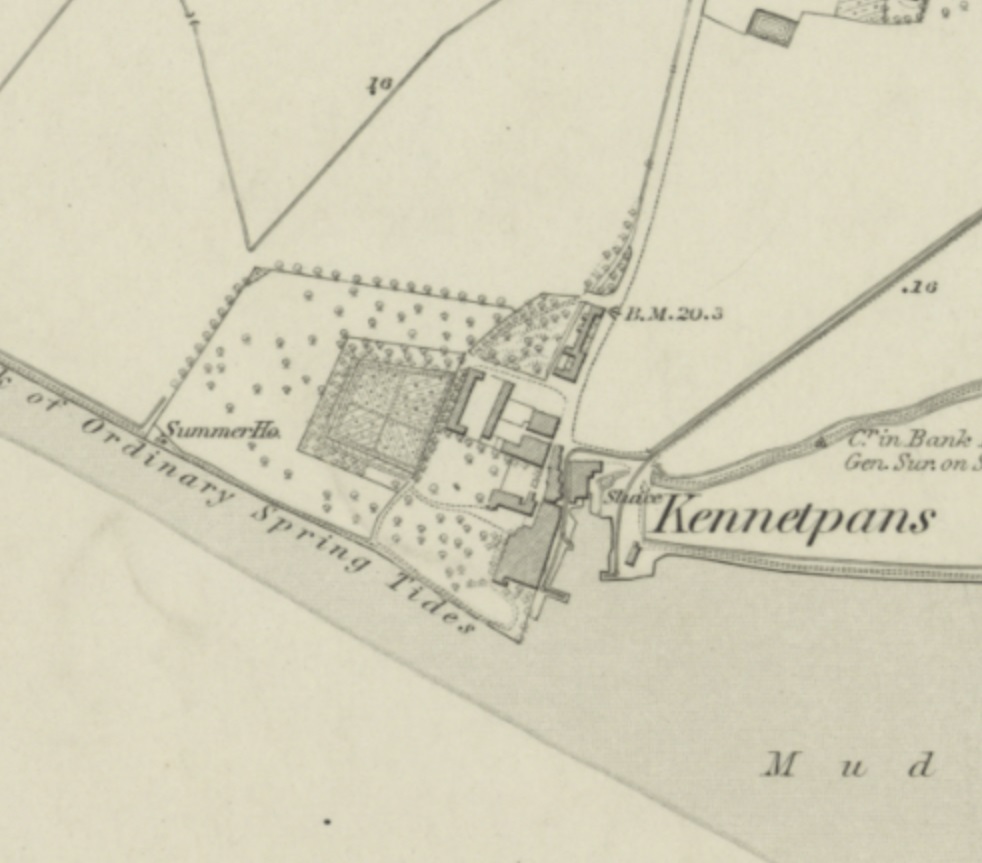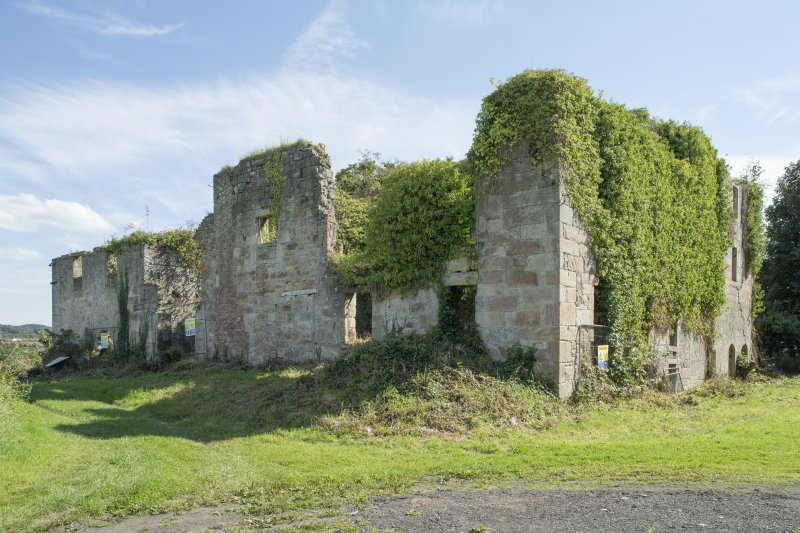The small hamlet of Kennetpans on the northern edge of the river Forth was host to a considerable enterprise which expanded during the industrial revolution. It was Andrew Stein (1672 – 1743) that first established a commercial whisky distillery at Kennetpans, around 1720.
Previously distilling had been practiced at the monastery of Kennetpans, and it is thought that there was a small cottage industry style distillery building that was still in existence at Kennetpans in Andrew’s time, which possibly could have been there since 1638.
The site had good river links to Edinburgh and had room for a pier to be built. The surrounding land of Craigton Farm was also worked by the Stein family, and so they had easy access to the crops they required and they could use the waste from the process to feed livestock.

Kennetpans Feus Map 1840
By 1722 Andrew Stein was using so much barley and wheat that he had a contract to have it shipped in from North Berwick.
By 1733 Kennetpans Distillery had become the biggest single distillery in Scotland, producing whisky on a grand scale. By this time it was being run by Andrew's Son, John Stein (1697 – 1773). It was said that the tax paid on the produce was greater than all of Scotland's land tax*.

Kennetpans OS map, 1860
From this distillery, and others they would own, the Steins founded the export market for Scotch whisky. This led to the building of one of the one of the first canals in Scotland, later to be replaced by one of the first railway lines in Scotland, both of these connected the Kennetpans Distillery and pier to the Steins’ distillery at Kilbagie, just over a mile to the north-east. The Stein family, have been described as being "at the forefront of the Industrial Revolution in Scotland." Certainly their business dealings are reasonably well documented.
The distillery was continuously improved, and the ruined buildings that still remain date from the 1770s. A newly developed condensing rotative steam engine, invented by James Watt, and produced by Boulton and Watt, was installed here in 1786, the first in Scotland. It was installed to replace the old windmill that drove the mill wheel used to grind the malt.
 Sketch showing a steam engine designed by Boulton & Watt, England, 1784.
Sketch showing a steam engine designed by Boulton & Watt, England, 1784.
John had twelve children, some of whom continued with the family’s distilling traditions. James founded a large distillery at Kilbagie, just over a mile from his father’s Kennetpans Distillery, Robert founded the Kincaple Distillery at St Andrews, Andrew purchased the Hattonburn Distillery at Milnathort. John’s son, John Jr. (1745 – 1825), eventually took over at Kennetpans. He also set his sights on the Irish market, founding the Bow Street Distillery, Dublin in 1780 and in the same year, he purchased another Dublin distillery, Marrowbone Lane. Both would become vast manufacturing concerns.
Kennetpans closed in 1825, and was later used as a store. Certainly the other nearby distilleries belonging to the Steins had better road links. By the early 1900s the buildings were roofless. Despite long abandonment the complex gives a remarkably complete picture of the scale, layout and construction of a major 18th century industrial enterprise.

Kennetpans - Canmore.org.uk
The site was designated as a scheduled monument in 1991. Work continues to try to salvage the remaining buildings for the future. For more information on this, and much more, visit Kennetpans.info
References:
Wikipedia
Kennetpans.info
Historic Environment Scotland (HES)
Canmore.org.uk
* Statistical Accounts of Scotland - Clackmannan Parish
Asme.org (Watt engine)
maps.nls.uk
